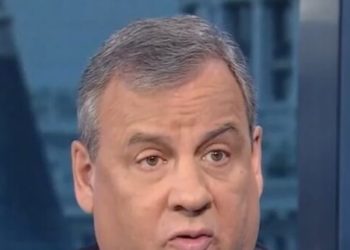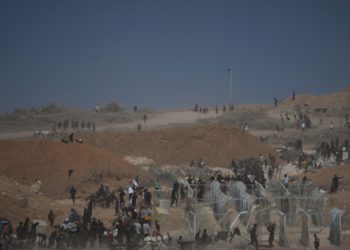Geir Pedersen, the UN special envoy for , recently told the Financial Times newspaper that Syria is on a “knife-edge” and “risks turning into Libya” should promised changes stall.
Syrian President Ahmed al-Sharaa “needs to do what I call a course correction,” Pedersen told the FT. The president needs to convince the population that “this is a new beginning” in the aftermath of the dictatorship of Bashar Assad, he said, “not a new autocratic regime.”
The revolution in , a country about 2,400 kilometers (1,450 miles) from Syria in North Africa, also began during the Arab Spring protests of 2011, but the initial war ended much sooner, with the help of the United States, Britain and France. Libya has now been divided since the NATO-backed revolt toppled and killed dictator Muammar Gadhafi in 2011. Three years later, the country that have since controlled the .
There are significant differences between Libya and Syria, Nanar Hawach, senior Syria analyst at the International Crisis Group, told DW. “The Syrian state never completely collapsed,” he said, pointing to December 2024, when a coalition of rebel groups led by the Hayat Tahrir al-Sham () militia — who was headed by now President al-Sharaa — ousted .
“While the country is partitioned into spheres of influence, local and international actors in Syria continue to operate in relation to this single central government,” Hawach said.
None of Syria’s neighbors, such as , and , nor invested powers like the and the Gulf countries, want the of a truly failed state and the chaos it would unleash on their borders, he said.
Yet “the lack of trust and political common ground between al-Sharaa’s government and other Syrian communities is a serious issue for the new government,” Kelly Campa, Middle East deputy team lead at the Washington-based Institute for the Study of War, told DW.
Relations with Kurds
Hours before Pedersen’s warning about Syria’s fragmentation was published, a skirmish between governmental forces and Kurdish fighters in the northern city of ended with a ceasefire.
Though the US-brokered deal seems to be holding, the clashes still highlight the between Syria’s largest ethnic minority group, with its semiautonomous homeland in the northeast of the country, and the central government in Damascus.
Despite a widely celebrated agreement in March between the Kurdish-led Syrian Democratic Forces and al-Sharaa’s government, progress the of Kurdish institutions into the central government’s structures has stalled. One of the key obstacles remains the integration of the around 60,000 Kurdish forces into the newly founded unified Syrian army.
The about 2.5 million from Syria’s first in October. Damascus cited security concerns and absence of central control, but promised to keep the allocated seats in the Syrian parliament vacant until elections will be held. The same is true for the seats of the other excluded minority, .
Integrating the , whose homeland encompasses about 30% of Syria, would mean not only increase the amount of territory under government control, but also give the government access to the region’s oil and gas reserves. These are key for the which is an urgent matter after 14 years of civil war that also ended in December 2024 with the ouster of Assad. The World Bank estimates that reconstruction costs are between $400 billion and $1 trillion (€940bn).
Relations between and Syria’s second-largest minority, the about 700,000 Druze, deteriorated after government forces reportedly supported Arab Beduin tribes in their in Sweida. Following in July, troops left the region of Sweida and returned to Damascus, however, some of the Druze minority have been since.
“Druze militias in Sweida have essentially established parallel administrative and security structures and absolutely oppose al-Sharaa and his government,” Campa said. “A lot of repair and dialogue needs to take place here,” she added.
A 30-year-old named Wiam in Sweida told DW that Syria already feels divided. “The situation today feels as if we’re moving toward a new reality with more than one ‘Syria’ within Syria,” he said, asking DW to not publish his full name for fear of retribution.
Al-Sharaa has also promised to “bring anyone whose hands are tainted with the blood of Syrian people to justice.” In at the UN General Assembly in New York in September, he said Syria had formed fact-finding missions and had given the United Nations the right to investigate killings of in March, and in July.
The president reiterated his pledge to respect minority rights and to form an inclusive government that reflects Syria’s diverse ethnic and religious makeup. Following the results, observers however pointed out that the assembly is far less inclusive and has a much lower female quota than expected.
“Al-Sharaa appears to be prioritizing maintaining his own political coalition for now over making substantial reforms that might alienate his allies,” Campa said. “Doing so is probably necessary to keep his government together but is no answer to the legitimate between his government and some groups like the Druze,” she added.
Campas said Syria’s government should prioritize aggressive steps to professionalize security forces. “Doing so might be a way to build bridges with communities that have lost their faith in him entirely,” she explains.
Despite all of the challenges, there are Syrians who are optimistic, as well. “No matter what temporary divisions or control issues parties may have, the people are ultimately one,” 45-year-old Damascus resident Yasser Al-Doumi told DW. “Syrians abroad or at home talk about ‘our country’ and not about ‘our regions’,” he said.
“This,” Al-Doumi said, “gives me hope that Syria will remain united.”
Omar Albam contributed to this report from Syria.
Edited by: M Gagnon
The post UN official fears Syria could resemble Libya after war appeared first on Deutsche Welle.




